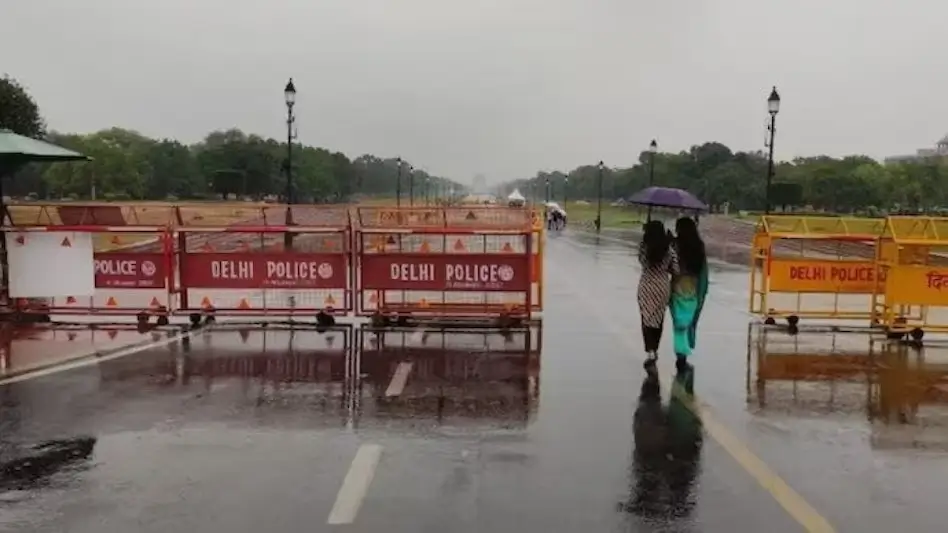Several parts of Delhi, Gurugram, Noida, and other adjoining areas of the National Capital Region (NCR) received rainfall on the intervening night of Thursday and Friday, bringing a much-needed respite from the bad air quality over the last few days

Rainfall fell on Thursday and Friday night in a number of places in Delhi, Gurugram, Noida, and other nearby districts of the National Capital Region (NCR), providing much-needed relief from the poor air quality of the previous few days.
The national capital’s showers coincide with ongoing efforts by the local authorities to use the concept of “artificial rain” in an attempt to reduce the level of pollution in the area.
Visuals from the Kartavya Path, ITO, and the Delhi-Noida border showed light to moderate-intensity rain showers. Meanwhile, the air quality index (AQI) at several monitoring stations across Delhi recorded an AQI of less than 100 this morning against 400+ at night.
The Regional Weather Forecasting Centre (RWFC) has predicted light intensity intermittent rainfall over and adjoining areas of Delhi-NCR, including Rajiv Chowk, ITO, India Gate, Akshardham, Safdarjung, RK Puram, Lajpat Nagar on Friday morning.
Noida, Dadri, Greater Noida, Faridabad, Jind, Panipat, Mattanhail, Jhajjar, Farukhnagar, Kosali, Mahendargarh, Narnaul, Hodal (Haryana), Meerut, Modinagar, Kithor, Bulandshahar, Jahangirabad, Anupshahar, Bahajoi, Pahasu, Debai, Narora, Gabhana, Atrauli, Aligarh, are also expected to receive showers.
Delhi Environment Minister Gopal Rai met with a team from IIT-Kanpur on Wednesday to discuss the possibility of artificial rainfall through cloud seeding to bring down the AQI of the national capital. After the meeting, the minister said that artificial rain could be used on November 20-21, if the weather remains cloudy.
The Delhi government has decided to bear the entire cost of artificial rain for combating hazardous air pollution in the city and directed the chief secretary to present the government’s views before the Supreme Court on Friday, PTI reported citing officials.
If the Centre supports the decision, the Delhi government can arrange for the first artificial rain in the city by November 20, they said on Thursday.
Artificial rain through cloud seeding involves dispersing substances into the air to encourage condensation, resulting in precipitation. The most common substances used for cloud seeding include silver iodide, potassium iodide, and dry ice (solid carbon dioxide). These agents provide the nuclei around which water vapor can condense, ultimately leading to the formation of rain or snow.
This weather modification technique has been utilized in various parts of the world, primarily in regions experiencing water scarcity or drought conditions.
